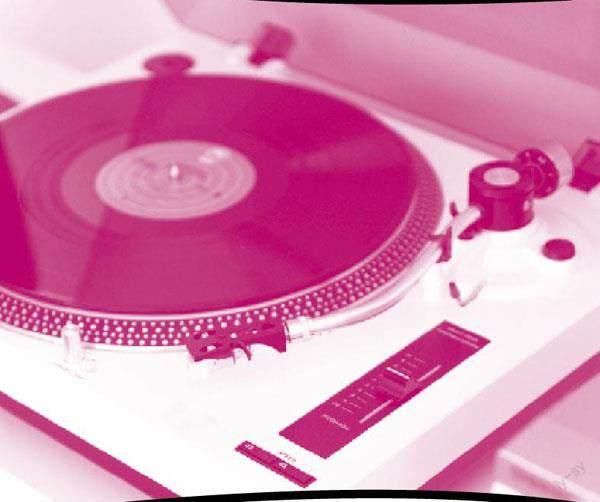Why Are So ManyPop Songs RoughlyThree Minutes Long?为什么流行歌曲通常长3分钟左右?



No matter where you usually hear todays top hits, youve probably noticed that they tend to be around three minutes long.
As Vox explains, the custom dates back to the early 20th century, when shellac records first appeared in the market. The rates at which these records spun varied, but 78 revolutions per minute (RPM) quickly became the norm. The most popular record sizes were 10 inches—which could hold about three minutes of music per side—and 12 inches, which held roughly four to five minutes per side. To get radio stations to broadcast their music and get people to buy it, musicians pretty much had to consider those time limits.
无论你习惯在哪儿听歌,你应该能注意到流行歌曲通常长3分钟左右。
Vox公司解释道,这一惯例源自20世纪早期,当时虫胶制作的黑胶唱片(粗纹唱片)刚刚在市场上出现。这些唱片的转速各有不同,但是每分钟78圈的转速很快便成了业内标准。最流行的唱片大小是10英寸(25.4厘米)和12英寸(30.48厘米),前者每一面可以播放3分钟音乐,后者每一面可以播放4—5分钟音乐。为了让电台播放他们的音乐,让人们购买他们的唱片,音乐人基本上都会遵从这些时间限制。
The late 1940s saw the birth of the 45 RPM record: a smaller, cheaper disc made of vinyl that couldnt manage much more than three minutes of music per side. Long-playing records (LPs) were introduced around the same time, but it was much easier for radio stations to play single tracks from 45s—which hordes of listeners then went out and bought. While 10-inch 78s had originated the three-minute trend, 45s really helped make it a necessity for radio singles throughout the mid-20th century.
As music technology evolved over the years, from records to cassette tapes to CDs, three minutes didnt fall out of fashion as the de facto standard for pop songs. According to Classic FM, this is partly because radio stations could fit more commercials into a program if the songs stayed relatively short. Record labels may have favored shorter singles, too, since longer songs didnt mean fatter royalty checks. Its also likely that pop music listeners just preferred concision; after all, its what the last several decades had taught them to expect. As Thomas Tierney, director of the Sony Music Archives Library, told Mashable, “Its embedded in our DNA.”
20世纪40年代晚期,45转的唱片诞生了,这种由乙烯基塑料制作的更小更廉价的黑胶唱片每一面只能播放3分钟左右的音乐。大概在同一时间,密纹唱片也上市了,但是电台播放45转的单声道唱片要容易得多。大批聽众在听过电台的音乐之后,就会去购买这种唱片。尽管3分钟的潮流是由78转的10英寸唱片引发的,但是45转的唱片却让20世纪中叶的电台单曲不得不控制在3分钟以内。
过去这些年,音乐技术不断进步,从唱片到磁带再到光盘……然而3分钟作为流行歌曲实际长度的标准并没有过时。据Classic FM电台介绍,一部分原因是如果歌曲相对较短,电台就能在节目中插播更多商业广告。唱片公司应该也青睐较短的单曲,因为时间长的单曲并不能给他们带来更多版税。不过也可能是因为流行歌曲的听众就是喜欢简短的歌,毕竟,过去几十年他们已经养成了这种听歌习惯。索尼音乐资料图书馆馆长托马斯·蒂尔尼在接受博客网站Mashable采访时说:“这已经根植于我们的DNA中了。”
Today, many tracks come in under three minutes long. Shorter attention spans and social medias influence might explain the trend toward brevity, but its not the only factor: The compensation model matters, too.
“Instead of getting paid by physical sales, youre getting paid in a stream, which only counts if someone listens to 30 seconds of a song,” songwriter Charlie Harding told The Verge. “It actually makes sense if you can have more songs streamed at a time, which means that you want to pack your album full of much shorter songs.”
In other words, success is now less about sales and more about number of streams. Todays pop stars are making music that reflects the shift—not unlike how 20th-century musicians learned to work within the confines of the original three-ish-minute limit.
如今,許多单曲时长都不到3分钟。人们的注意力持续时间变短以及社交媒体的影响或许可以解释流行歌曲为什么越来越短,但是除此之外,还有报酬机制的因素。
作曲人查理·哈尔丁在接受网站The Verge采访时说:“现在不是根据唱片销量,而是根据流量来收费,一首歌收听时间达到30秒才能计入流量。这样一来,你会想在流媒体平台上一次播放更多歌曲,这意味着你会在专辑中收录更多短歌。”
换言之,如今一张唱片成功,与销量的关系没那么大,而流量则重要得多。现在的流行歌手在制作音乐时也会反映当下形势的变化,这与20世纪的音乐人学着在3分钟的播放限制内创作并无不同。
Word Bank
horde /h??d/ n. 一大群人
There are always hordes of tourists here in the summer.
royalty check 版税
embed /?m'bed/ v. 使牢牢嵌入;使根深蒂固
These attitudes are deeply embedded in our society.
brevity /'brev?ti/ n. 短暂
